16
btcShark Crypto Exchange Review: Risks, Fees, and Security Concerns
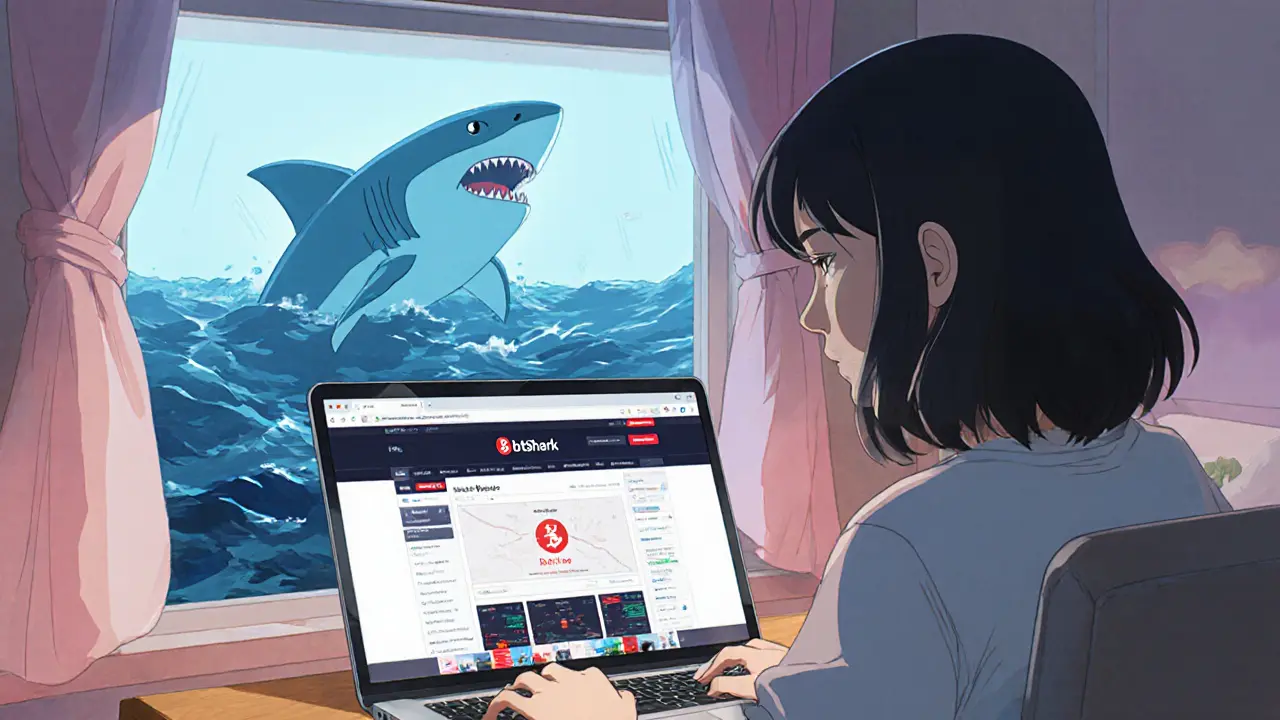
btcShark Risk Assessment Tool
This tool evaluates btcShark against industry standards to highlight potential risks. Enter values below to see how btcShark compares to reputable exchanges.
Risk Assessment Results
Overall Risk Level
Recommendation
Detailed Analysis
When a new crypto platform pops up, the hype can be tempting, but a close look often reveals hidden problems. This review breaks down what btcShark is a cryptocurrency exchange that markets itself as a fast‑track to digital asset trading and why you should think twice before depositing any funds.
Quick Takeaways
- Fees are opaque and can be far higher than industry averages.
- Extreme price volatility on the platform has left users with significant losses.
- No clear evidence of regulatory compliance or robust security measures.
- Customer support is unresponsive, and many users report withdrawal issues.
- Consider reputable alternatives that offer transparent fees and proven security.
What Makes btcShark Different?
At first glance, btcShark positions itself as a sleek, user‑friendly cryptocurrency exchange a platform where users can buy, sell, and trade digital assets. The website boasts flashy graphics and promises “instant trades” with “minimal slippage.” In practice, the experience varies dramatically, and the platform’s lack of public documentation makes it hard to verify any of its claims.
Fee Structure and Transparency Issues
One of the first red flags is the mysterious transaction fee the charge applied each time a user trades or withdraws cryptocurrency. Users on community forums repeatedly mention fees that feel “exorbitant,” yet btcShark never publishes a clear fee schedule. For comparison, legitimate exchanges typically list trading fees ranging from 0.1% to 0.25% and withdrawal fees that reflect network costs - often around $20 for Bitcoin withdrawals.
When a platform hides its costs, it becomes nearly impossible to calculate how much of your capital is actually being eroded each trade. This lack of transparency is a classic hallmark of risky exchanges.
Volatility and Trading Risks
Beyond fees, the platform’s price feeds appear highly volatile. Users have described scenarios where a modest trade “left you penniless in the blink of an eye.” Such extreme swings suggest that btcShark may be using internal liquidity pools that are poorly balanced or even manipulated. While crypto markets are inherently volatile, an exchange should not amplify that volatility to the point where normal traders cannot survive.
In short, the platform’s price engine adds an extra layer of risk that most traders are not prepared for.
Security and Regulatory Gaps
Security is non‑negotiable in crypto. Reputable exchanges employ security protocols measures such as cold storage, encryption, and multi‑factor authentication to protect user funds. btcShark, however, provides no public evidence of cold storage usage, and its website only mentions a generic “2FA” without explaining the implementation.
Even more concerning is the absence of any mention of regulatory compliance adherence to financial regulations, licensing, AML, and KYC procedures. A legitimate exchange will prominently display its licensing jurisdiction and audit reports. Without this, both the platform and its users are exposed to legal and financial jeopardy.

User Experience and Support
Positive user experiences often hinge on responsive support. Reports from btcShark’s community indicate slow ticket responses, delayed withdrawals, and in some cases, outright refusal to process cash‑outs. In contrast, well‑established exchanges maintain dedicated support teams, live chat, and detailed help centers.
When you can’t get help quickly, any issue-whether a mistaken address or a suspicious login-can turn costly fast.
How It Stacks Up Against Legitimate Exchanges
| Feature | btcShark | Typical Reputable Exchange |
|---|---|---|
| Fee Transparency | Hidden, no published schedule | Clear table of trading & withdrawal fees |
| Price Stability | Extreme volatility, possible price manipulation | Market‑linked feeds, minimal slippage |
| Security Measures | Basic 2FA claim, no cold storage info | Cold storage >90%, 2FA, encryption, regular audits |
| Regulatory Status | Unclear, no licensing displayed | Licensed, AML/KYC compliant, audit reports |
| Customer Support | Slow, often unresponsive | 24/7 live chat, ticket system, detailed FAQs |
The table makes it evident that btcShark falls short across the board. While a few newer platforms might lag in one area, none should score poorly on all critical fronts simultaneously.
Red Flags and Scam Warning Signs
Regulators like the CFTC the Commodity Futures Trading Commission, which monitors fraud in the crypto space list common scam tactics: promises of guaranteed high returns, pressure to increase deposits, and difficulty withdrawing funds. btcShark’s user reports line up perfectly with these patterns.
Another warning sign is the lack of insurance or government backing. As the FTC Federal Trade Commission, which advises consumers about financial risks reminds, crypto holdings aren’t insured like bank deposits. This makes due diligence essential.
Combine opaque fees, extreme volatility, missing security details, and poor support, and you have a recipe for potential loss.
Safe Alternatives to Consider
If you’re looking for a reliable place to trade, stick with exchanges that publish their fee schedule, use cold storage for the majority of assets, and are registered with financial authorities. Platforms such as Coinbase, Kraken, and Binance (for users in compliant jurisdictions) meet most of these criteria.
Before signing up, verify the exchange’s licensing information, read recent user reviews, and test the withdrawal process with a small amount. This “test‑and‑confirm” approach can save you from costly surprises.
Bottom Line
While the idea of a sleek, fast‑moving crypto platform is appealing, the evidence surrounding btcShark points to a high‑risk venture. The hidden btcshark review reveals fee ambiguity, volatile pricing, weak security, and absent regulatory compliance-all classic signs of a potentially fraudulent exchange. Proceed with extreme caution, or better yet, choose a proven alternative.
Frequently Asked Questions
Is btcShark a licensed cryptocurrency exchange?
There is no public record of btcShark holding a financial license or being registered with any regulatory body. Legitimate exchanges usually display this information prominently.
How do btcShark’s fees compare to industry averages?
The platform does not publish a fee schedule, but user reports suggest fees far exceed the typical 0.1%‑0.25% trading fee and $20‑$30 Bitcoin withdrawal fee seen on reputable exchanges.
Can I trust btcShark with my crypto assets?
Given the lack of transparency, reported withdrawal problems, and missing security details, it is risky to store large amounts on btcShark. Consider keeping only a small testing balance or moving to a vetted exchange.
What security features should a good exchange provide?
Key features include cold storage for the majority of funds, two‑factor authentication (2FA), encrypted communications, regular third‑party audits, and strict AML/KYC processes.
Where can I find reliable user reviews of crypto exchanges?
Look for independent forums like Reddit’s r/CryptoCurrency, Trustpilot, and community sites such as CoinGecko’s exchange reviews. Avoid relying solely on the exchange’s own testimonials.
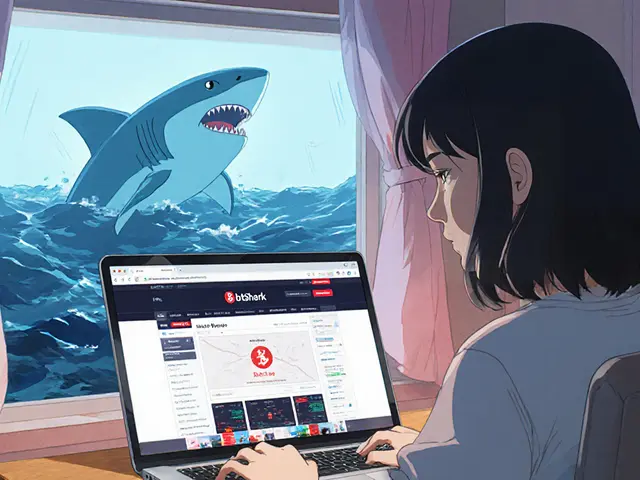
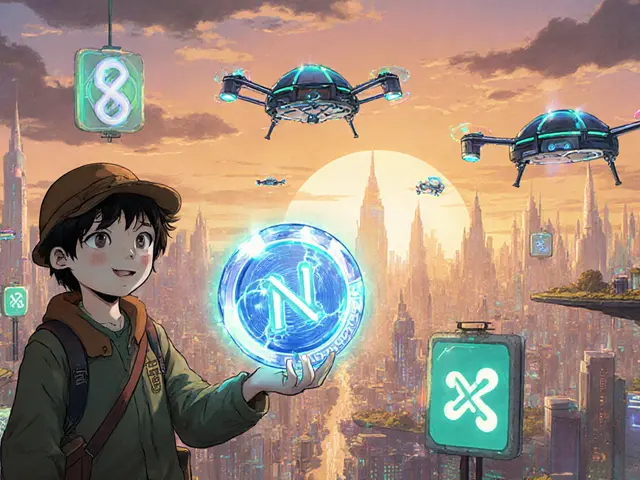



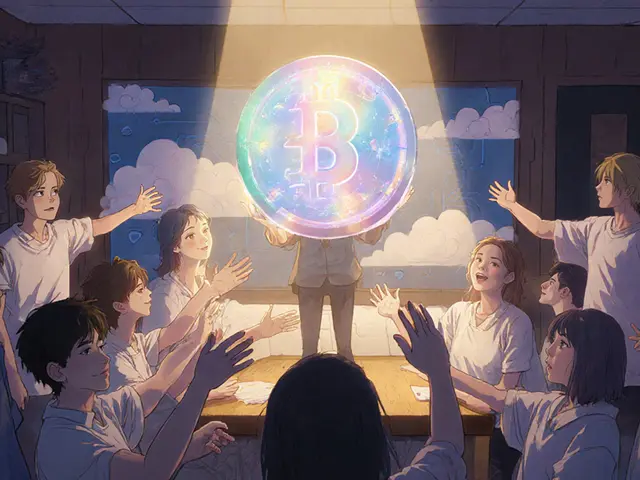
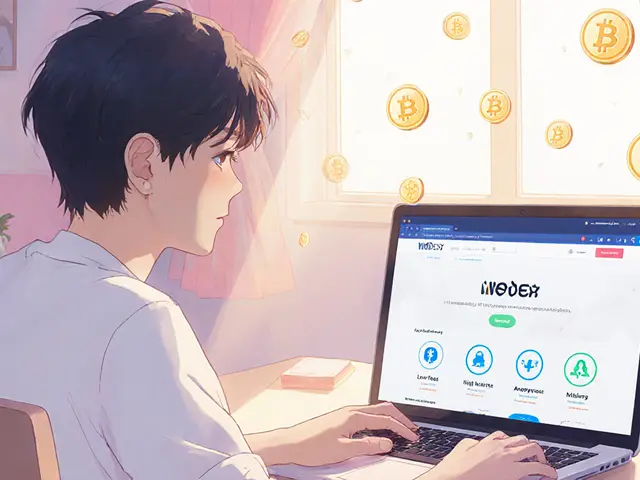
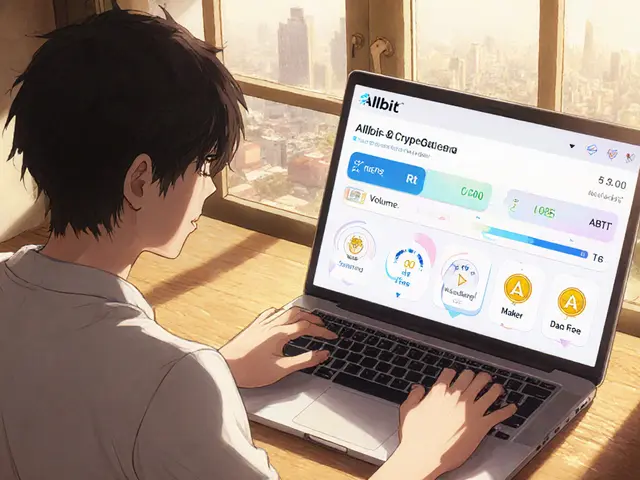
Amy Harrison
August 16, 2025 AT 11:03Totally agree, stay safe out there! 🚀
Natalie Rawley
August 17, 2025 AT 10:56You know what really irks me about these shady platforms? They lure fresh investors with glossy marketing and then disappear behind a maze of hidden fees. The fee structure they hide is often three times higher than the industry norm. People end up paying a fortune on every trade without even realizing it. On top of that, the price feeds are so volatile they feel like a roller coaster on steroids. That kind of volatility is a red flag that the exchange might be manipulating the order book. Security is another nightmare; they brag about 2FA but provide zero proof of cold storage. Without cold storage, every user’s assets sit exposed to hacks. Regulatory compliance is nowhere to be found, which means there’s no consumer protection. Customers report withdrawal delays that stretch into weeks, sometimes never getting their money back. In the crypto world, a platform that can’t process withdrawals is essentially a scam. The community chatter is filled with horror stories of lost funds and ghosted support tickets. If you compare it side‑by‑side with reputable exchanges, the differences are glaring. Transparency, security, and reliable support are the pillars of any trustworthy exchange. Bottom line: steer clear unless you’re ready to gamble your hard‑earned crypto on a mystery box.
Katherine Sparks
August 18, 2025 AT 10:50Hey, I totally get how unsettling this all feels :) It’s tough when fees feel like a hidden monster eating your gains. If you keep an eye on your transaction history, you’ll spot the patterns quicker. Always double‑check the fee schedule before you lock in a trade, even if the website looks shiny. Remember, a little caution now can save a lot of headaches later. Stay vigilant, and don’t be afraid to reach out for help if you’re unsure.
Kimberly Kempken
August 19, 2025 AT 10:43Honestly, these hype‑driven exchanges are just a contrarian’s playground. They promise the moon while feeding on gullible newbies. If you value your crypto, ditch the flashy UI and stick with proven institutions. The volatility they flaunt is just a smokescreen for deeper manipulation. Stop falling for the circus and demand real transparency.
Taylor Gibbs
August 20, 2025 AT 10:36While that’s a valid point, it’s also worth noting that not every new platform is malicious. Some are still figuring out their compliance pathways. Offering mentorship on how to test withdrawals with a small amount could help newcomers navigate safely. Let’s keep the dialogue constructive and share best practices.
Rob Watts
August 21, 2025 AT 10:30Totally see the risk here but also look at the upside if they fix the fees. Some users find value in the fast execution. Keep your eyes open and trade responsibly.
Jim Griffiths
August 22, 2025 AT 10:23Check the exchange’s audit reports. If they’re missing, that’s a red flag.
Matt Nguyen
August 23, 2025 AT 10:16From a broader perspective, the opacity of such platforms aligns with a pattern of covert financial engineering observed across several jurisdictions. One must consider the hidden systemic risks they impose on the crypto ecosystem.
Cynthia Rice
August 24, 2025 AT 10:10In the end, every exchange is a reflection of the trust we place in its governance.
Shaian Rawlins
August 25, 2025 AT 10:03Let’s take a step back and look at the bigger picture here. The crypto space thrives on innovation, but that innovation must be paired with responsibility. When a platform hides its fee schedule, it undermines the very transparency that fosters community trust. Moreover, the reported volatility spikes suggest that the internal liquidity pools might not be properly balanced, which can cause price slippage beyond typical market movements. Users should always perform a small test transaction before committing larger sums, as this can reveal hidden costs and potential delays in withdrawal processing. It’s also crucial to verify whether the exchange employs cold storage for the majority of its assets; without that, every user’s funds are effectively exposed to cyber‑theft. Regulatory compliance isn’t just a buzzword – it’s a safety net that ensures there’s an oversight mechanism in place should anything go wrong. By choosing exchanges that are registered with recognized financial authorities, traders add an extra layer of protection. Finally, community feedback is a goldmine; scouring forums for recent user experiences can give you a realistic expectation of support quality. In short, due diligence is the best armor against these hidden pitfalls.
Tyrone Tubero
August 26, 2025 AT 09:56Whoa, that’s a lot to take in! 😲 But seriously, the drama around hidden fees is real, and the volatility can wipe out a day trader in minutes. I’ve seen friends lose half their stash because they trusted the “instant trades” promise. It’s a wake‑up call for all of us to stay skeptical and protect our assets.
Bhagwat Sen
August 27, 2025 AT 09:50I’ve been watching this exchange for a while and the lack of clear documentation is just not acceptable. Users deserve open communication, especially when it comes to money.
Cathy Ruff
August 28, 2025 AT 09:43What a joke, they can’t even handle withdrawals. People are getting ripped off and nobody says anything.
Miranda Co
August 29, 2025 AT 09:36That’s an angry take, but the frustration is understandable. If the platform can’t process payouts, it’s basically a trap. Users need to spread the word and stay cautious.
mukesh chy
August 30, 2025 AT 09:30Oh sure, because every “new” exchange is secretly a government experiment. 🙄 Let’s not jump to conspiracy without evidence.
Marc Addington
August 31, 2025 AT 09:23Patriotic investors shouldn’t support shady foreign platforms. Stick with home‑grown, regulated services.
Amal Al.
September 1, 2025 AT 09:16It’s crucial that we keep the conversation respectful and focus on factual information. Sharing verifiable sources helps everyone make informed decisions.
Scott McReynolds
September 2, 2025 AT 09:10When we contemplate the essence of trust in digital financial ecosystems, we must recognize that transparency functions as the cornerstone of that trust. A platform that veils its fee structure behind cryptic interfaces inevitably erodes confidence. Moreover, the interplay between market volatility and exchange liquidity demands rigorous scrutiny, lest users find themselves adrift in unforeseen price swings. Security, too, cannot be an afterthought; the absence of cold storage disclosures invites speculation about custodial risk. Regulatory alignment, often dismissed as bureaucratic red tape, actually provides a framework for consumer protection and recourse. In the grand tapestry of crypto evolution, each thread-be it fee clarity, security protocols, or compliance-must be woven with care, lest the fabric unravel under the weight of negligence. Therefore, as participants in this ever‑shifting landscape, we bear the responsibility to demand and uphold these standards, ensuring a resilient and trustworthy environment for all.